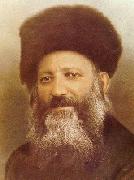
Azar's Question
During the years that Rav Kook served as chief rabbi of Jaffa, he met and befriended many of the Hebrew writers and intellectuals of his time. His initial contact was with the 'elder' of the Hebrew writers, Alexander Zuskind Rabinowitz, better known by the abbreviation 'Azar.' Azar was one of the heads of Po'alei Tzion, a Marxist, anti-religious party; but over time Azar developed strong yearnings for traditional Judaism. He met with Rav Kook many times, and they became close friends and soul mates.
Azar once asked Rav Kook: how can the Sages interpret the verse "An eye for an eye" [Ex. 21:24] as referring to monetary compensation? Does this explanation not contradict the simple meaning of the verse?
The Talmud [Baba Kamma 84a] brings a number of proofs that the phrase "eye for an eye" cannot be taken literally. How, for example, could justice be served if the person who poked out his neighbor's eyes was blind? Or what if one of the parties had only one functioning eye before the incident? Clearly, there are many cases in which such a sentence would be neither equitable nor just.
What bothered Azar was the wide discrepancy between a simple reading of the verse and the Talmudic exegesis. If "eye for an eye" in fact means monetary compensation, why doesn't the Torah say that explicitly?
The Parable
Rav Kook responded by way of a parable. The Kabbalists, he explained, compared the Written Torah to a father and the Oral Torah to a mother. When parents discover their son has committed a very grave offense, how do they react?
The father immediately raises his hand to punish his son. But the mother, full of compassion, rushes to stop his raised arm. "Please, not in anger!" she pleads, and she convinces the father to mete out a lighter punishment.
An onlooker might feel that all this drama and conflict is superfluous. In the end, the child did not receive corporal punishment; why make a big show of it?
In fact, the scene had great educational value for the errant son. Even though he was only lightly disciplined, the son was made to understand that his actions deserved a much more severe punishment.
The Fitting Punishment
This idea also holds true for one who injures another. Such an individual needs to realize the gravity of his actions. In practice, we can only make him pay monetary restitution, as the Oral Law rules. But he should not think that money alone can rectify what he has done. As Maimonides wrote in his legal code, the Mishneh Torah, the Torah's intention is not that we should actually injure him in the same way that he injured his neighbor, but rather "that it is fitting to amputate his limb or injure him, just as he did to the other" [Laws of Personal Injuries 1:3].
Maimonides more fully developed the idea that monetary restitution alone cannot atone for physical damages in chapter 5:
"Causing another bodily injury is not like causing monetary loss. One who causes monetary loss is exonerated as soon as he repays the damages. But if he injured his neighbor, even though he paid all five categories of monetary restitution - even if he offered to God all the rams of Nevayot [see Isaiah 60:7] - he is not exonerated until he has asked the one injured for forgiveness and he agrees to forgive him." [ibid. 5:9]
The Revealed and the Esoteric
Azar noted: Only Rav Kook could have given such an explanation, clarifying legal concepts in Jewish Law by way of Kabbalistic metaphors. For I once heard him say that the boundaries between Nigleh and Nistar - the revealed and the esoteric parts of Torah - are not so rigid. For some people, Bible with Rashi's commentary is an esoteric study; while for others, even a chapter in the Kabbalistic work "Eitz Chayim" of the Ari z"l is considered 'revealed.'
[adapted from "Malachim Kivnei Adam", R. Simcha Raz, pp. 351, 360]

